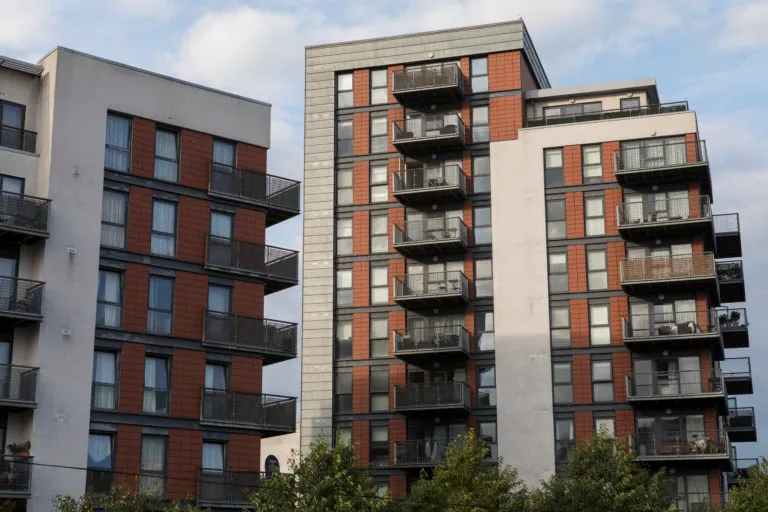Climate change and housing – ensuring we tackle climate equitably
Published: by Alastair Harper

Glasgow COP feels already like yesterday’s news. The NGO ads urging that we have one week to save the planet have been replaced on Argyle Street with Black Friday offers. The leaders have flown back, fewer planes shared than would have been sensible. All will be quiet until the next talks. But climate change itself doesn’t rest in between conferences.
Inaction has cost us in our own country – and it’s those who Shelter stands with who are on the front lines. I saw first hand this summer people who are rough sleeping have their tents washed away in flash floods.
Families in inadequate accommodation finding it hard to stay cool in summer heat waves and, with homes that leak or with windows in disrepair, dry in sudden storms. Just as is the case around the world, it is the poorest trapped in the housing emergency that are also hit hardest by the climate emergency.
That is why a group of housing and homeless organisations have come together to write to Alok Sharma and Michael Gove about how we now need to deal with the climate emergency as not one far from us, not just covered in fearful photos of Australia and California on fire, but as one on our front door. We wrote to the politicians ‘to urgently review whether current rough sleeping emergency weather measure are fit for purpose in our new reality of extreme weather. In addition, just as in Glasgow you heard why the poorest who did not cause this problem must not bare the financial burden of fixing it, we must take the same approach in our own country.’
Retrofitting existing stock
Meanwhile, we know we need to retrofit our existing stock. UK homes account for 14% of total UK emissions. Yet the cost of retrofitting existing homes averages at over £20,000 a property on average, five times higher than doing so in a new build, and a cost that is as financially impossible as it is unfair for home-owners already hit by extortionate and rising housing costs.
Right now, homeowners are having to buy from developers a home that does not meet the standards that are coming, so they will face that extra £20k bill to retrofit their home down the road. Even some housing associations are still building homes not up to the standard that will be required by 2025 under a new Future Homes Standard, which our builders don’t yet have the skills to deliver. Fewer than 1.5% of new homes built by Housing Associations would reach the top rating according to an Inside Housing investigation. It makes no sense when it is so much cheaper to make a new building Net Zero versus doing it all again later – yet too many Housing Associations are building in the cost of retrofit in their new builds they will have to pay themselves in only a few years’ time.
But that is the reality of how tight costs are for new social housing – just how much the rules around funding are set against building the housing tenure we need most. With our nation facing a net loss of half a million social homes, we know we can’t make two essential societal needs compete. We need to both find funding for new social homes and ensure the investment we need to get ready for net zero.’
A small idea that could make a big difference
So that’s three problems: we have a dangerous lack of social housing and we’re only going backwards, we haven’t the skills and supply chains to deliver the Future Homes standard, and the cost retrofitting is set to be astronomical.
At Shelter, we called for a small idea that we think could make big difference in our suggestions for the government’s Spending Review. We believe a new era of climate resilient and carbon negative housing offered at a social rent could be piloted to reduce costs and show how a net zero transition could help the most vulnerable reduce bills and produce better places to live.
A pilot for 10,000 new net zero social homes could help us with both challenges. Utilising and deploying new technology at scale in new social rent properties would prepare the country and corresponding supply chains for the Future Homes Standard, and it would help bring down the costs of this technology through that deployment, helping us achieve our social as well as environmental goals.
Given the dual goal of providing quality social homes and ensuring the new supply chains we need for net zero housing, funding would need to be additional to the Affordable Homes Programme and responsibility shared across both BEIS and MHCLG with delivery by Homes England. Most importantly, it would give towns and cities across the country a practical vision for what our housing could be – clean, safe, healthy and affordable.